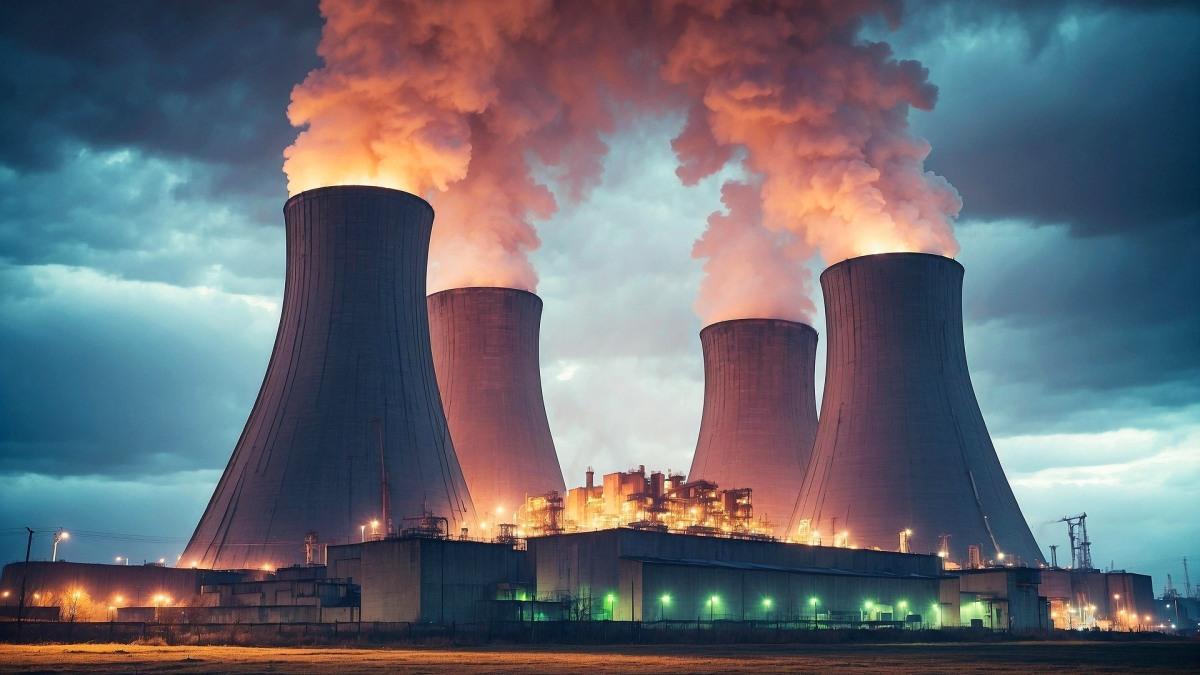India’s power sector CO2 emissions fell in H1 2025 for the first time in nearly 50 years (outside the pandemic), thanks to record renewable growth and lower coal use from cooler, wetter weather.

The decline in power sector emissions helped overall emissions from fossil fuels and cement grow at their slowest rate this century, excluding the pandemic. Photograph: Kind courtesy, Pete Linforth/Pixabay
India’s devastating monsoons have had an unexpected silver lining this year, much like the Covid-19 pandemic did in 2020.
Carbon dioxide (CO2) emissions from the country’s power sector declined for the first time in the first half (H1) of 2025 in nearly half a century — excluding the pandemic period — according to a new research. Record additions of renewable energy also helped reverse emissions growth.
India’s CO2 emissions from its power sector, which is dominated by coal-fired generation, fell by 1 per cent year-on-year (Y-o-Y) in the January-June period of 2025 and by 0.2 per cent in the July 2024–June 2025 period.
This is only the second drop in almost 50 years, according to analysis by the Centre for Research on Energy and Clean Air (Crea), a Finnish think tank, for Carbon Brief, a UK-based information provider.
The power sector accounts for over half of India’s total emissions. CO2 emissions from power generation added up to around 724 million tonnes (mt) in H1 2025, down from 729 mt in the same period a year earlier, said Crea India analyst Anubha Aggarwal to Business Standard.
In the 12 months to June 2025, emissions totalled 1,392 mt of CO2, compared with 1,394 mt in the previous year.
The decline in power sector emissions helped overall emissions from fossil fuels and cement grow at their slowest rate this century, excluding the pandemic.
After the power sector, the second-largest contributor was fossil fuel use in industry, which accounts for another quarter of total emissions, while oil used in transport contributes about an eighth.
The analysis also suggests that emissions from India’s power sector could peak before 2030 if clean-energy capacity and electricity demand grow as expected, Aggarwal and lead analyst Lauri Myllyvirta said.
India’s CO2 emissions matter globally, as the country contributed nearly two-fifths of the rise in global energy-sector emissions since 2019, accounting for 31 per cent of global growth in the decade to 2024 and rising to 37 per cent in the past five years, largely due to a surge from 2021 to 2023, according to Crea.
The only sectors that continued to grow their emissions in H1 2025 were steel and cement.
Government infrastructure spending helped accelerate emissions growth in these sectors, with CO2 from cement and steel rising by 10 per cent and 7 per cent, respectively, Crea said.
The report is the first in a regular series covering India’s CO2 emissions, based on monthly data for fuel use, industrial production, and power output, compiled from numerous official sources.
Extensive rainfall and cooler temperatures in 2025 led to a drop in peak electricity demand compared with last summer, reducing the use of coal-fired generators.
Utilisation of coal-fired generators fell to 67 per cent in June from 75 per cent a year earlier.
“The cooler summer and above-average rainfall temporarily reduced electricity demand and the need for fossil-based generation,” said Vineet Mittal, chairman of Avaada group.
“If we continue to invest in transmission, storage, and digitalised system operations, the moderation in emissions growth can be sustained over the long term,” he added.

Growth in clean-energy capacity reached a record 25.1 gigawatt in 1H2025, up 69 per cent from the previous year’s record figure, the note said.
This new capacity is expected to generate nearly 50 terawatt-hours of electricity per year.
However, India must remain cautious: a return to high power demand without robust renewable integration could see a resurgence in coal use unless battery storage and flexible demand mechanisms mature rapidly, said Siddharth Bhatia, managing director of Oyster Renewable Energy.
Separately, overall carbon emissions in H1 2025 fell Y-o-Y, with 1,540 mt of CO2 emitted through June 30, marking a 2.2 per cent decline from 1,574 mt in H1 2024, UK information provider Energy Intelligence said.
This figure is based on data from the Carbon Monitor project, an international initiative providing near-real-time daily global CO2 emissions data since January 2019. Emissions from power generation fell by 3.6 per cent to 850 mt during the period.
China emissions
India’s emissions, which account for 8 per cent of the global total, increased by over 4 per cent last year, according to the Global Carbon Budget 2024.
With 18 per cent of the world’s population, India’s per-capita emissions remain far below the global average, Crea noted.
Record solar growth helped reduce China’s overall CO2 emissions by 1 per cent in H1 2025 compared with a year earlier, Myllyvirta said in a separate note. This continues a declining trend that began in March 2024.
CO2 emissions from China’s power sector — the country’s dominant source — fell by 3 per cent (69 mt) in H1 2025, as solar generation growth matched the rise in electricity demand.
China’s overall emissions, accounting 32 per cent of the global total, increased by 1.2 per cent last year, though the forecast range includes the possibility of a decrease, according to the Global Carbon Budget.
Feature Presentation: Rajesh Alva/Rediff




